Prishtina Central Mosque Entry by Maden&Co
By Bustler Editors|
Tuesday, Apr 23, 2013
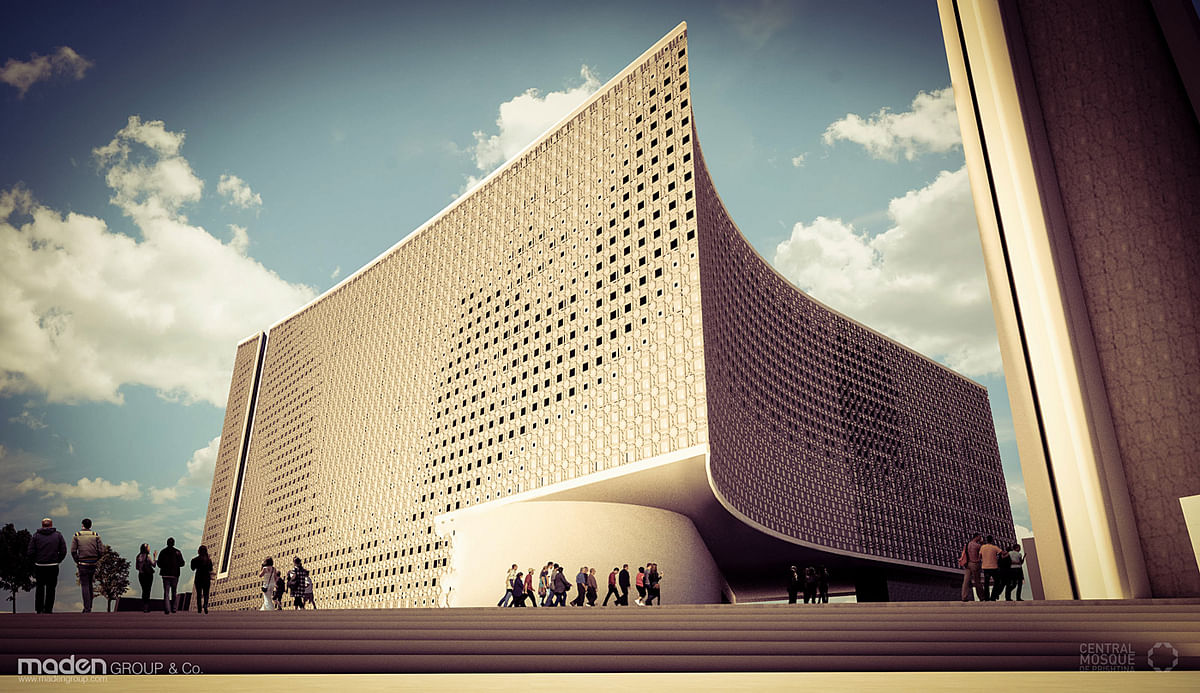
Related
Last week, we had published the finalists of the international architecture competition to design the Central Mosque of Prishtina in Kosovo. One of the very few local firms among the international ones that participated in this competition was Prishtina-based architecture practice Maden Group whose entry is featured here.
Project Description from Maden&Co:
THE IDEA
The study starts from the first religious needs and the study of the earliest mosques architecture in Kosovo and in other countries to convey tradition through contemporary architecture. Our objective was to combine in the best mode architecture and religious rules.
The idea was developed in geometric foundations, by combining to simple geometrical elements. Square as a simple and pure form, the perfect form, because what we want to convey is the purity of the faith, for us this form reflects the religion. Even in the earliest mosques the shape of the building based on the square, on a regular form where everything is equal as well as we are equal in front of God.

Tradition is priceless element that we have to use it wisely because the purpose of the Central Mosque of Prishtina is to inherit the old and rich culture that the city was build upon and to pass it through time as a center for Islamic culture in the capital of Kosovo.
Since the Central Mosque of Prishtina will take the lead as the main Mosque has to be related with the existing Grand Mosque of Prishtina. The connection has to be either through concept or physical elements that create the bridge of heritage. Since the location dedicated for the Central Mosque is in a highly dense urban block, process of design had its own obstacles.

THE CONCEPT
The biggest architecture value is to achieve transmitting elements from predecessor which in this case is the Grand Mosque of Prishtina (Sulltan Mehmet Fatih Mosque). By analyzing the typology of this Mosque we developed the concept by using same elements to design the plan pattern. We wanted to create this transfer bridge between the past and the future.
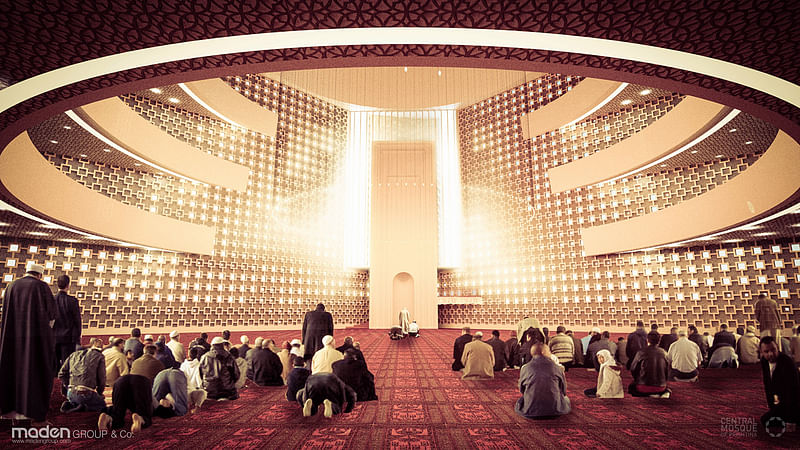
THE VOLUME
Since the Central Mosque of Prishtina besides meeting the needs for praying, our initial idea was to make a city landmark which will serve as a central point of orientation. Volume and architectural touch is the best way to express the importance of this building. We wanted to create orientation elements also in the exterior of the Mosque to be used by people either for religious needs or simple as marking certain directions. Direction of Kibla is the most important point for commencing with religious ceremonies. That is why we started to rearrange the exterior volume of our design to emphasize this strong element.
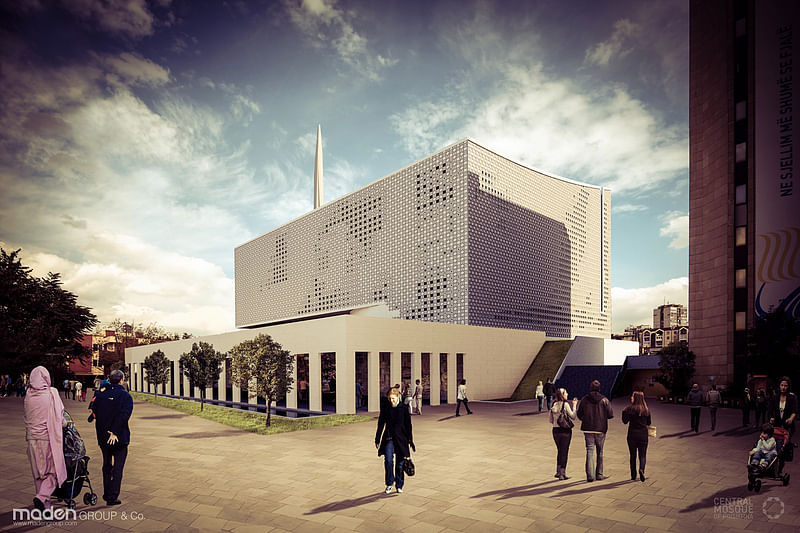
THE FAÇADE PATTER
Using arabesque in our concept was one of our aims to keep the tradition as a part of other design elements of our Mosque. Flower in Islam - Flower patterns complement the symmetry common in Islamic design. Islamic art often integrates the use of symmetrical and geometric designs for decorative purposes. Mathematical concepts as they apply to artistry and design lend themselves well to producing flower motifs. We used this technique to design Mosque`s façade. By generating and combining geometry with flower patterns we reached a custom designed façade to fit with every element used in the fundamental concept of the Mosque design.
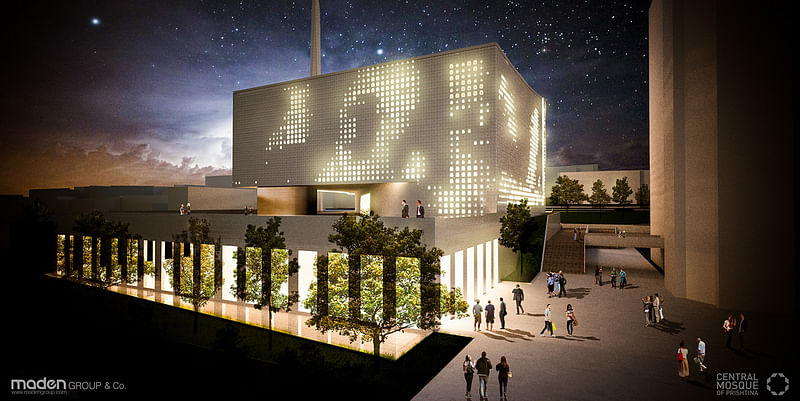
FLEXIBILITY
To reach the highest number for praying during Islamic holidays we designed the landscape so it can offer extra space for praying. Floor pavement is designed for orientation and also to mark the praying space for one person. Because of the weather conditions in Prishtina during winter, we designed a flexible solution to shelter bigger number of people within the perimeter of the Mosque. By using folding panels, in front of the entrance we can create this space.
Also we can transform the interior of the main praying hall into smaller spaces in the time when the Mosque is not full so we can be more energy efficient. This flexibility is done by respecting the rule for not mixing men and women in the process of praying.
As we mentioned above, we wanted to preserve the tradition not only in terms of architecture elements but also in the terms of functionality. It is known fact that early age cities were characterized with the city center, the Mosque and the bazaar. Everything is connected; accessing the complex you can either go to the Mosque or use the underground levels for shopping and other functions. We used small stairs and ramps so the access is maximized for everybody. Using the typology of small stores we created this web of functions.
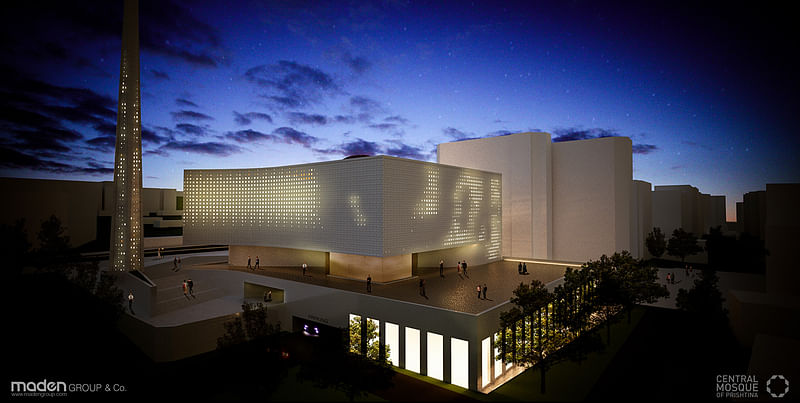
SUSTAINIBILITY
Sustainability of the mosque building should be determined on some required achievements mentioned below:
Sustainability from design - Rationalizations of mosque building shape indicate the sustainability. General provisions, adequate orientation, and placement of openings in that way which maximize the usage of natural reassures like are: sunlight, insulation, ventilation and air conditioning. These are some direct accesses to increase the values of the building in sustainability context.
Alternative Energy solutions - Regarding to alternative energy solutions which are required in this kind of contemporary building, in this case, it is proposed to use the geothermal energy. To realize this idea, first of all, it's needed to do the A-testes for the abilities of land on that area.
Also, to heat the inner space of the mosque during the winter days, it is proposed to use the heating from the city central heating network, which is near this location. The city central heating network is going to work in ecological way and with time generation, using the steam of Kosova B thermo central which produces electrical energy.
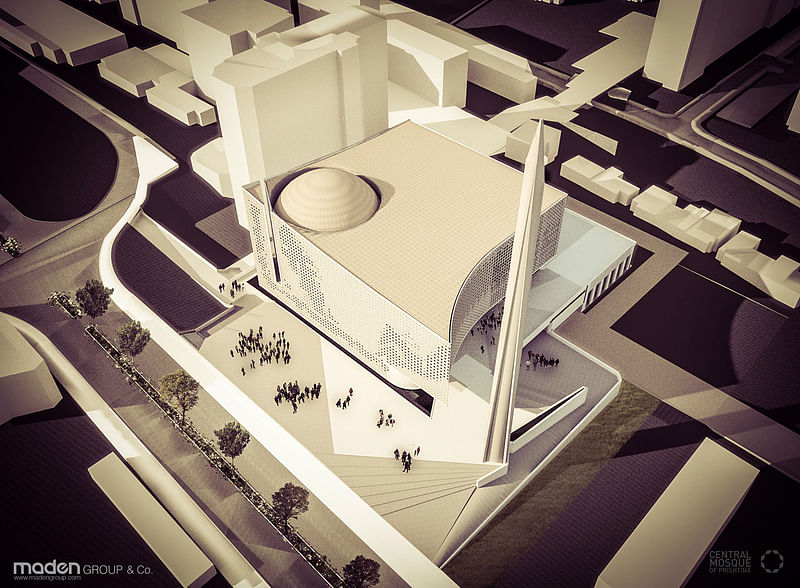
Passive energy - To fulfill the goal to reduce the bills of electrical energy, to heat during the winter and cool during the summer, it is proposed to use the passive energy which is achieved with air space between double walls and coverage of building. Also, there are proposed those materials, which during the day absorb the sunlight and heat, and released them during the night.
Materials - It is proposed to use the local materials and those that are easily find in local trade. Also it is proposed to use the classical technology to build the mosque. These things are really important from economical view, which makes an important sustainable pattern.
Recycling - The water of rainfalls is going to be collected or accumulated, filtered and then is going to use for daily ablution.
Ventilation - Ventilation of space in mosque is thought to be in natural way, where the air flow is realized from openings in façade walls.
Light - The light fittings of front yard are going to be with their own solar panels that use the solar energy to produce light.

Project Details:
Architects: Maden Group (Ideal Vejsa, Gazmend Dema, Dafine Gashi, Leart Mullaademi, Shpat Pozhegu) + Rron Tresi + Marsida Musta
Status: Competition Submission
Client: The Islamic Community of the Republic of Kosova
Location: Prishtina Kosova
Site Area: 8,100 sqm
Floor Area: 45,000 sqm
Year: March, 2013
Find also plans and diagrams of the project in the image gallery below.
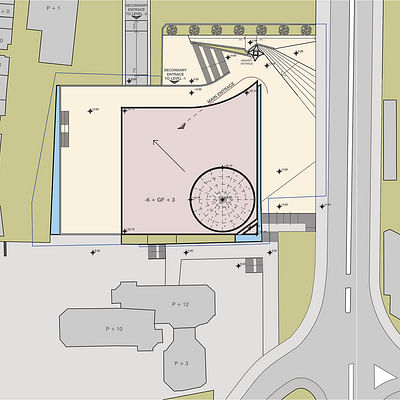
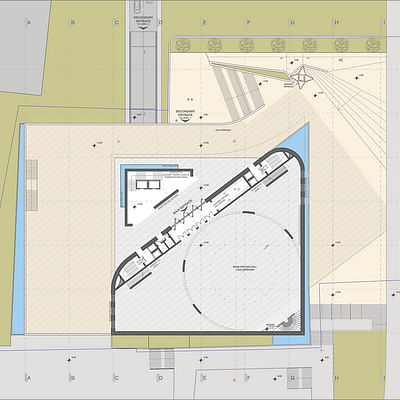
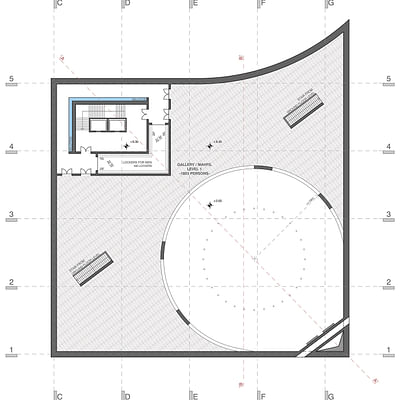
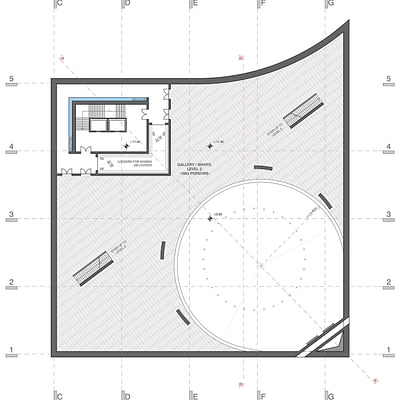
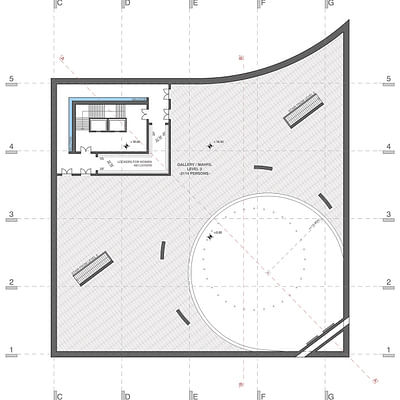

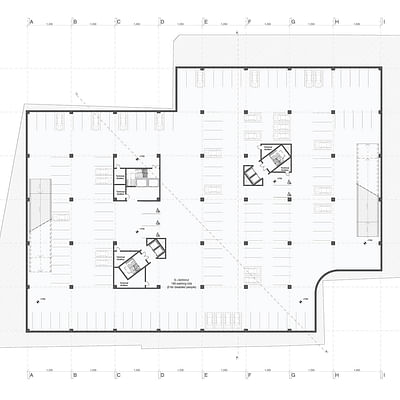

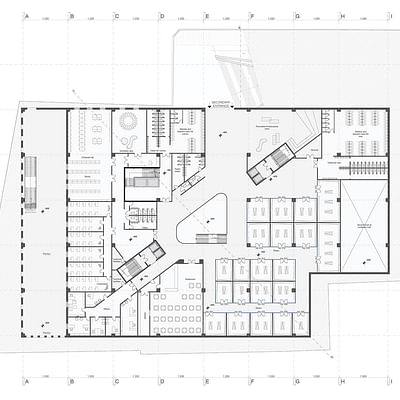

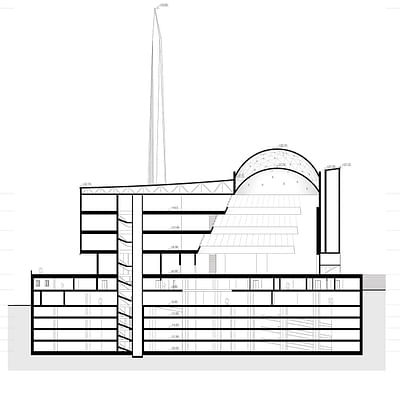
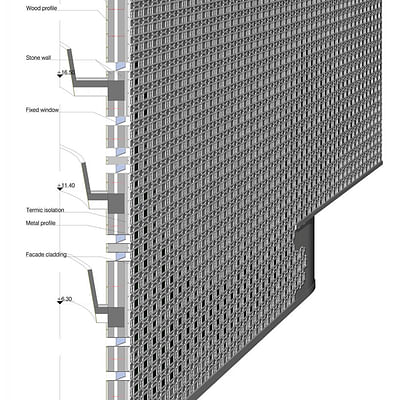



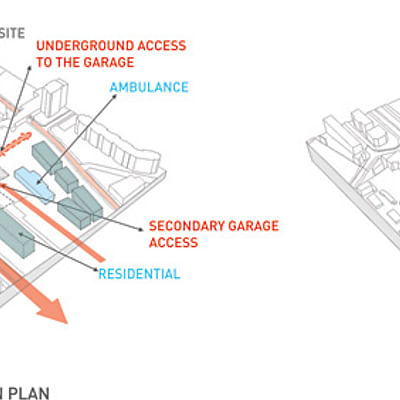

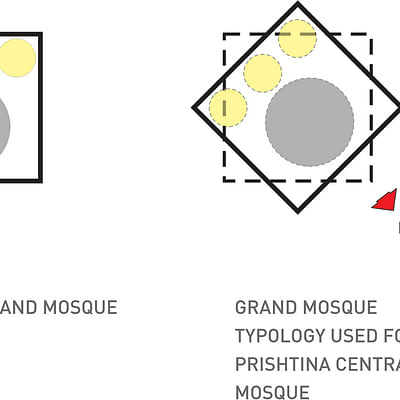
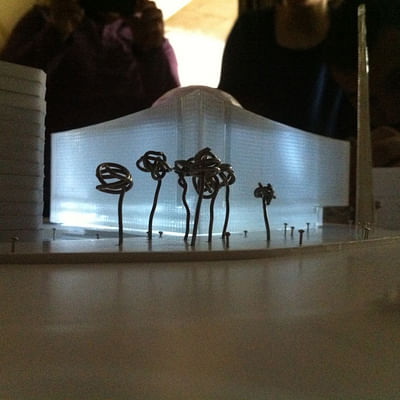
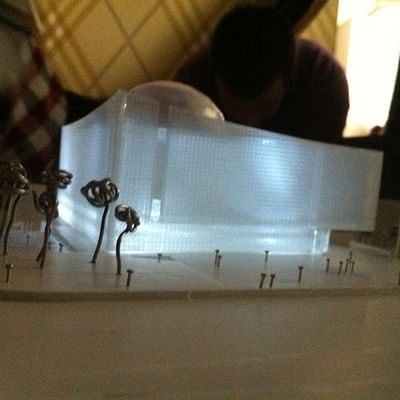

Share
0 Comments
Comment as :